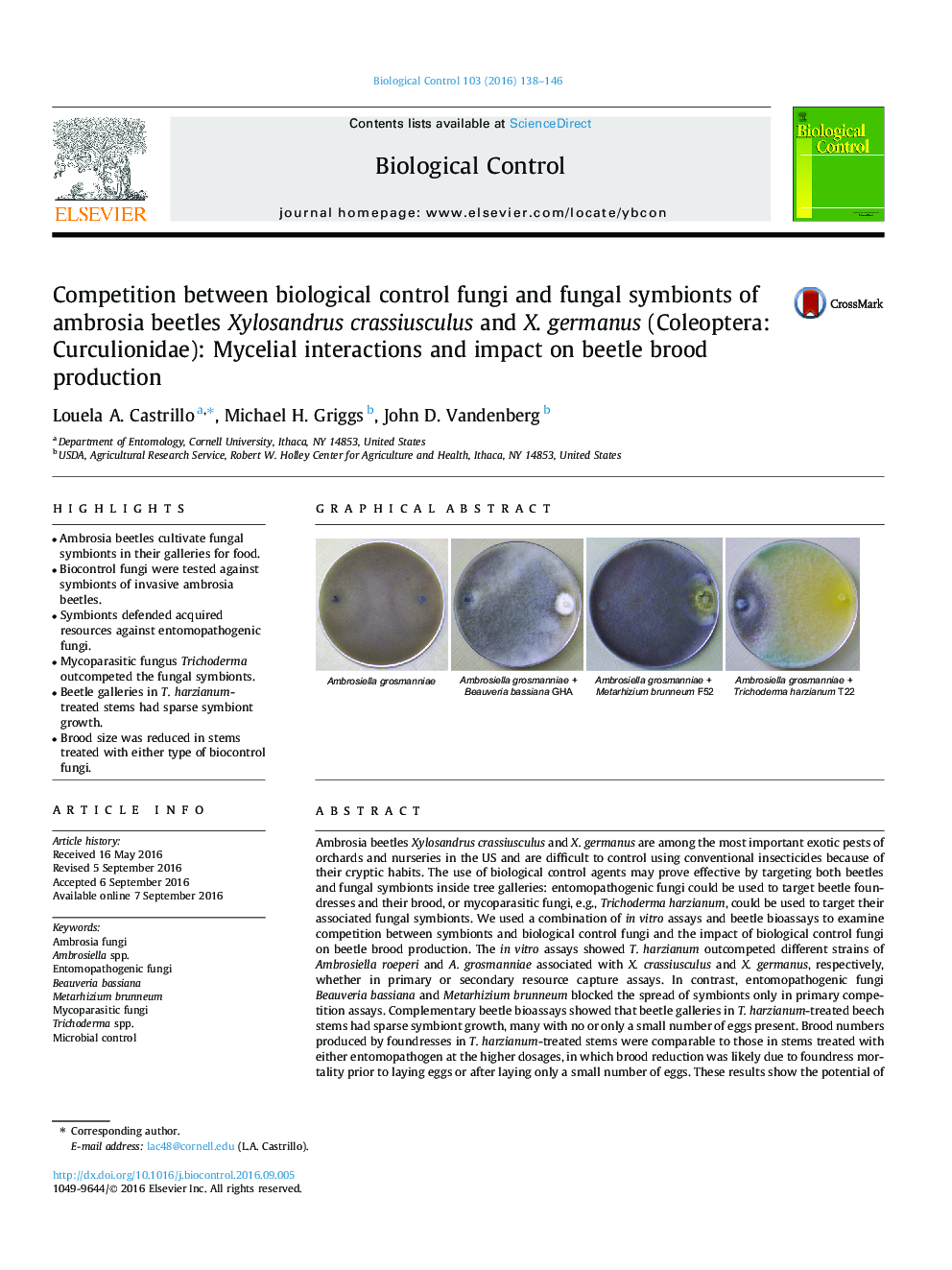| کد مقاله | کد نشریه | سال انتشار | مقاله انگلیسی | نسخه تمام متن |
|---|---|---|---|---|
| 4503544 | 1624231 | 2016 | 9 صفحه PDF | دانلود رایگان |

• Ambrosia beetles cultivate fungal symbionts in their galleries for food.
• Biocontrol fungi were tested against symbionts of invasive ambrosia beetles.
• Symbionts defended acquired resources against entomopathogenic fungi.
• Mycoparasitic fungus Trichoderma outcompeted the fungal symbionts.
• Beetle galleries in T. harzianum-treated stems had sparse symbiont growth.
• Brood size was reduced in stems treated with either type of biocontrol fungi.
Ambrosia beetles Xylosandrus crassiusculus and X. germanus are among the most important exotic pests of orchards and nurseries in the US and are difficult to control using conventional insecticides because of their cryptic habits. The use of biological control agents may prove effective by targeting both beetles and fungal symbionts inside tree galleries: entomopathogenic fungi could be used to target beetle foundresses and their brood, or mycoparasitic fungi, e.g., Trichoderma harzianum, could be used to target their associated fungal symbionts. We used a combination of in vitro assays and beetle bioassays to examine competition between symbionts and biological control fungi and the impact of biological control fungi on beetle brood production. The in vitro assays showed T. harzianum outcompeted different strains of Ambrosiella roeperi and A. grosmanniae associated with X. crassiusculus and X. germanus, respectively, whether in primary or secondary resource capture assays. In contrast, entomopathogenic fungi Beauveria bassiana and Metarhizium brunneum blocked the spread of symbionts only in primary competition assays. Complementary beetle bioassays showed that beetle galleries in T. harzianum-treated beech stems had sparse symbiont growth, many with no or only a small number of eggs present. Brood numbers produced by foundresses in T. harzianum-treated stems were comparable to those in stems treated with either entomopathogen at the higher dosages, in which brood reduction was likely due to foundress mortality prior to laying eggs or after laying only a small number of eggs. These results show the potential of using biological control fungi in targeting ambrosia beetle populations either directly by killing foundresses and reducing brood production or indirectly by suppressing symbiont growth in their galleries.
Figure optionsDownload as PowerPoint slide
Journal: Biological Control - Volume 103, December 2016, Pages 138–146